We live in a world with challenges from climate change and resource scarcity, to population growth and economic instability. This project aims to propose a design using nature based solutions, as biochar with agriculture base. The building becomes a zero-carbon emission system in the suburbs, where agriculture is mainly productive. The project strives to be replicable and scalable, redefining the future city.
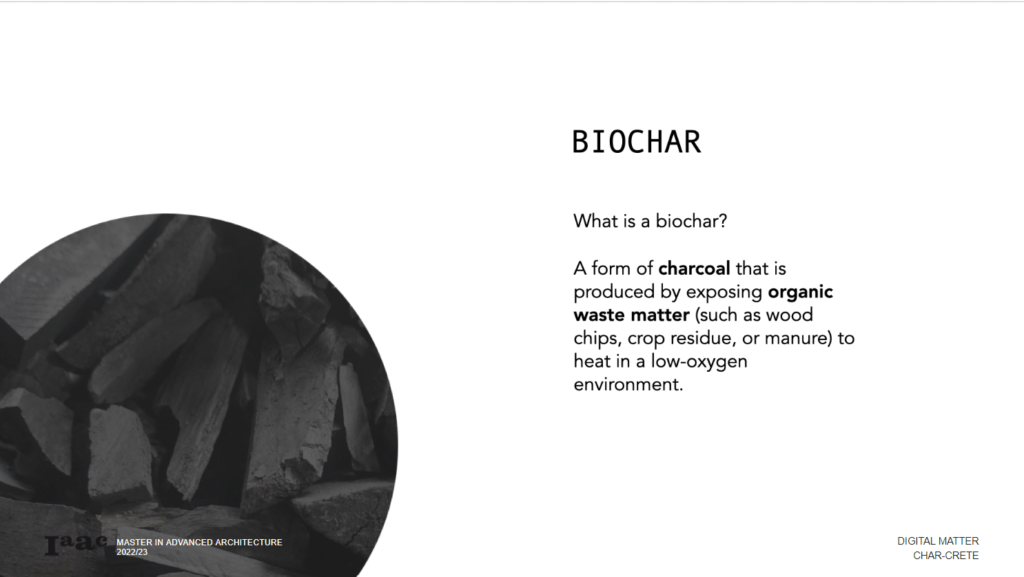
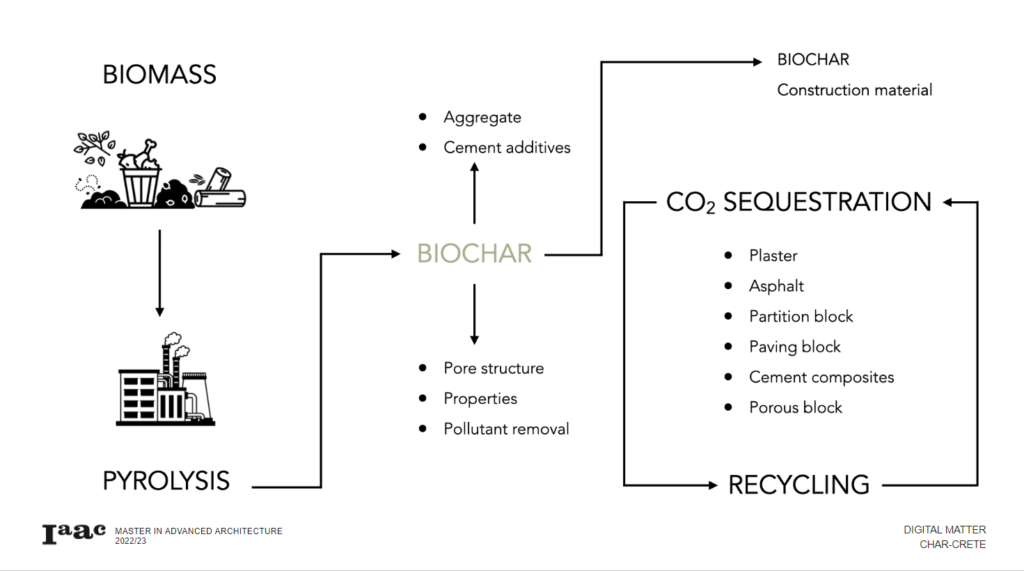
Here we can find some current usages of the biochar listed below:
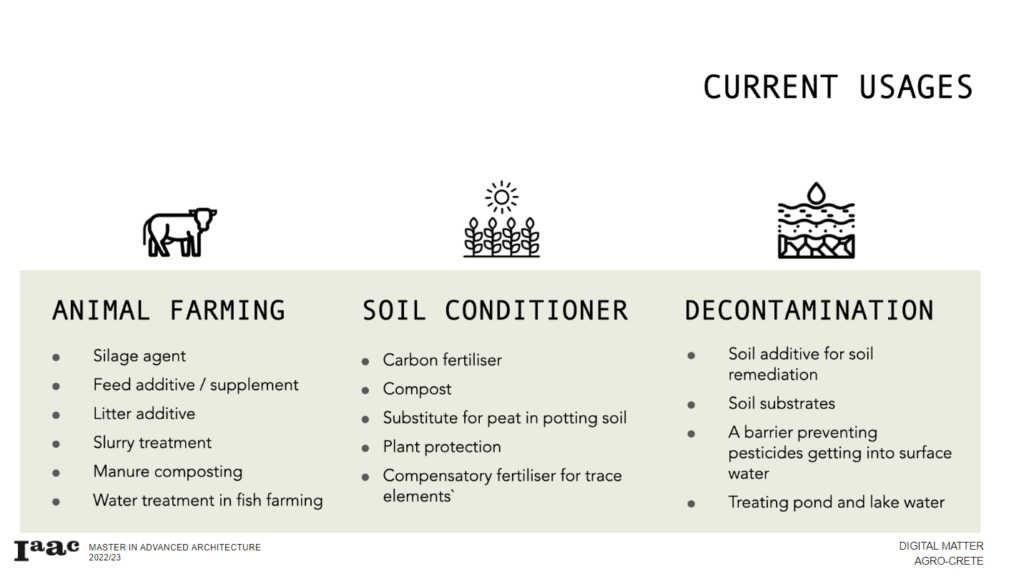
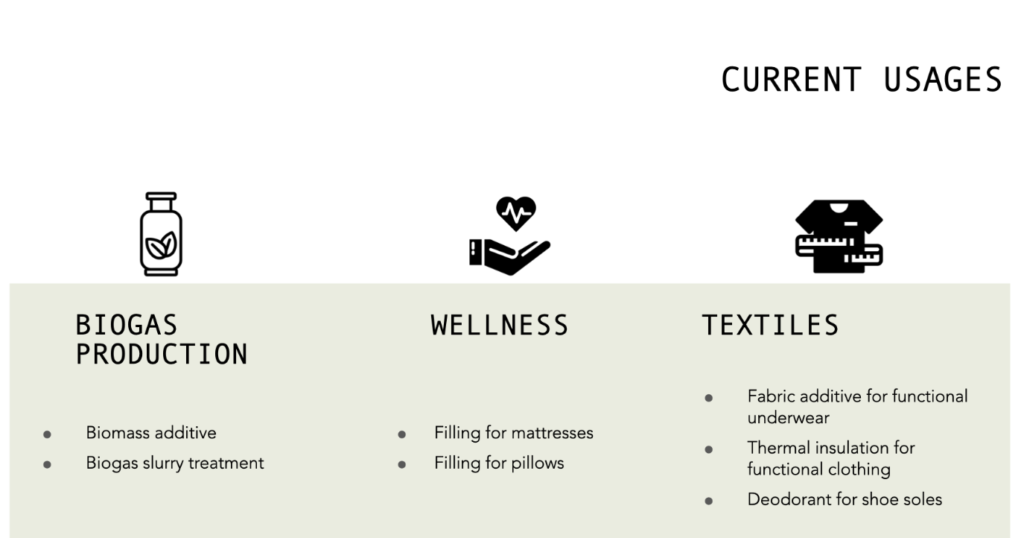
There are certain technical and environmental advantages in this material:

Converting various biomass wastes into biochar and expanding new applications of biochar could provide a win–win strategy for realising long-term decarbonisation
and fostering a circular economy.
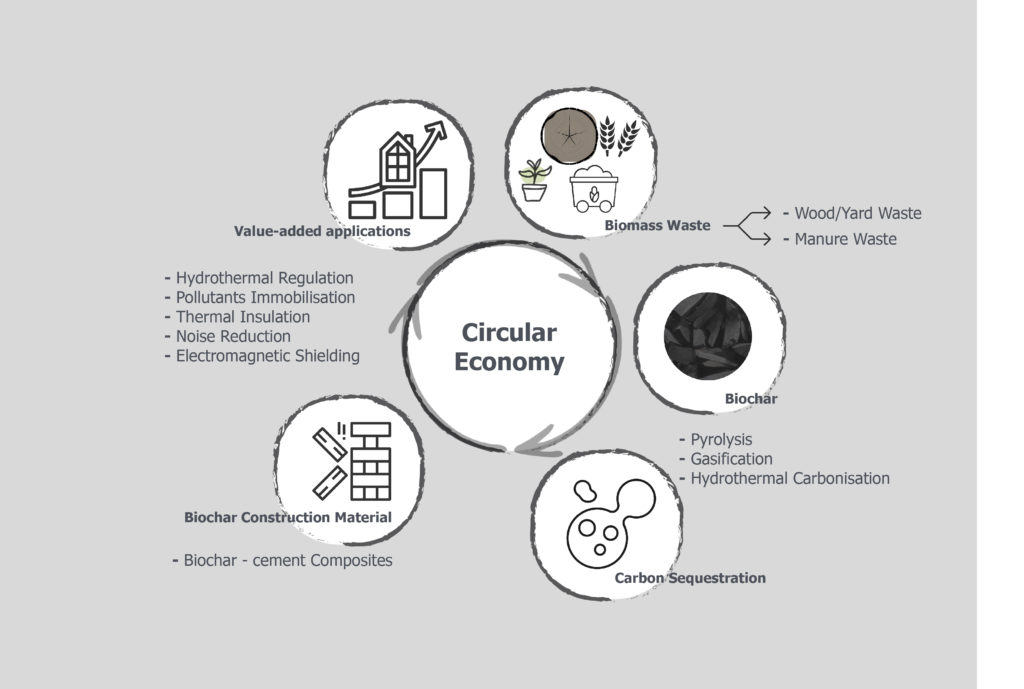
Manufacturing is being proceed in within steps
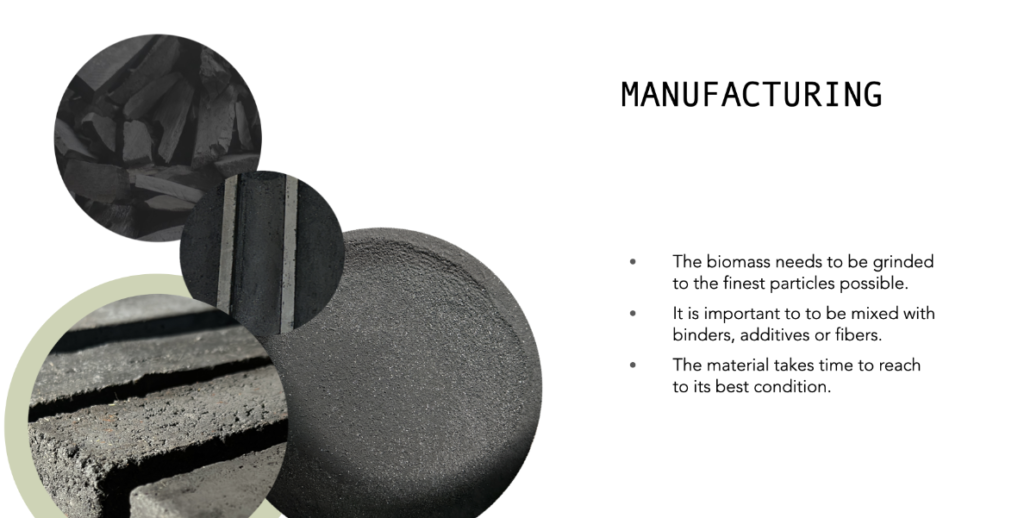
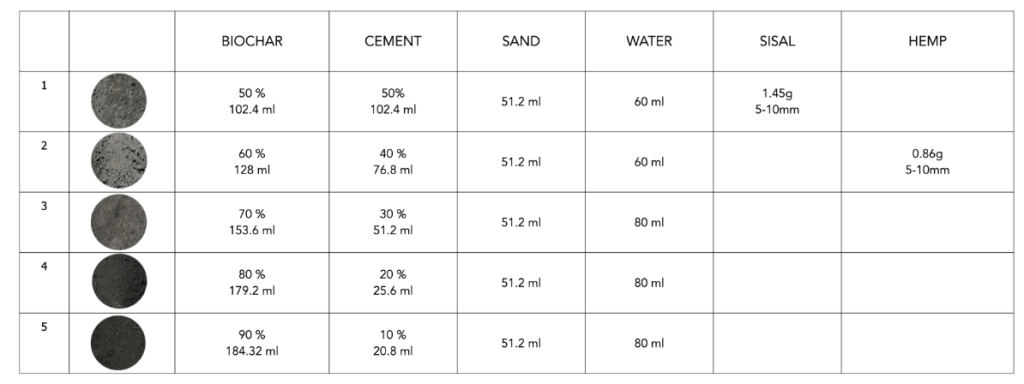
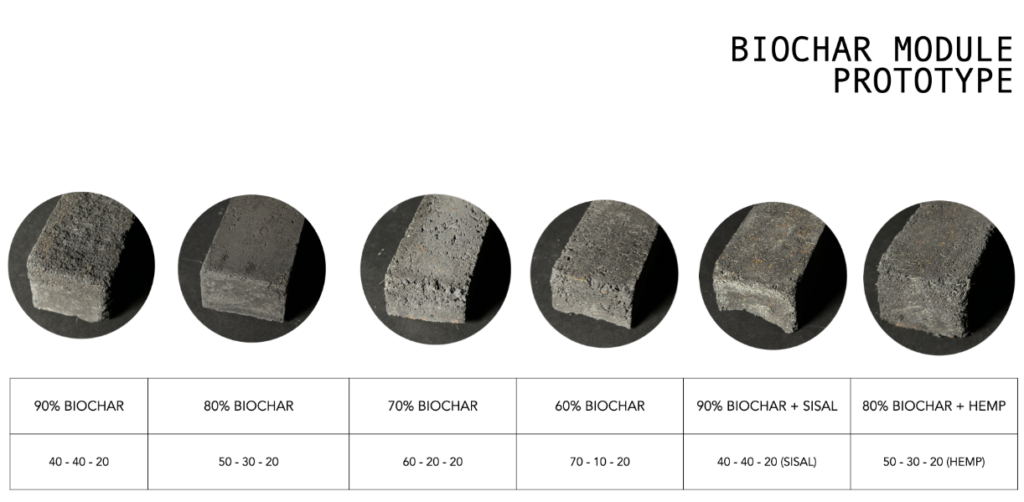
The site was introduced in the outskirts of Barcelona where agriculture is mainly processed.
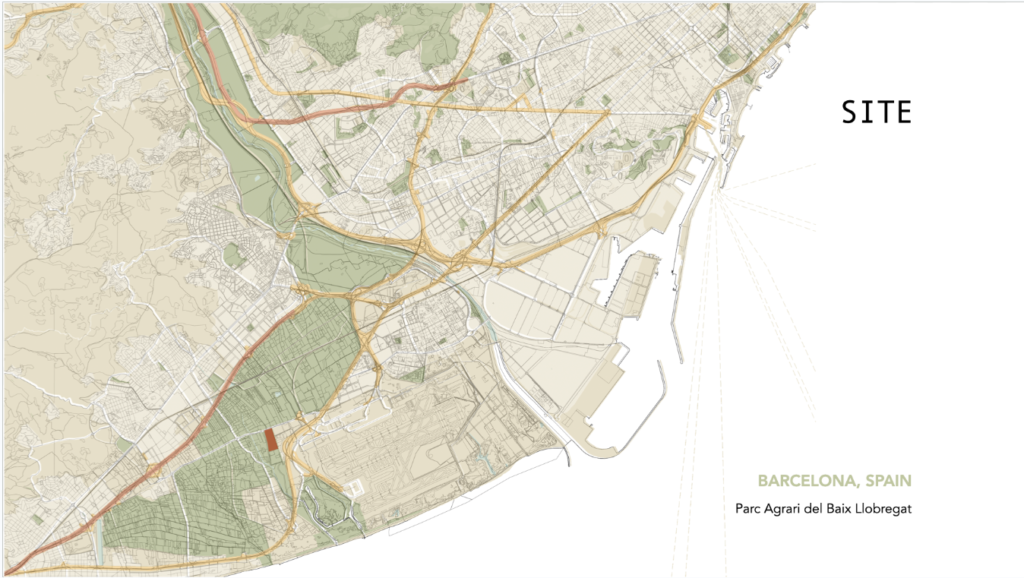
In the midst of the metropolitan area, the Agrarian Park is an economic hub for the production of fresh, local, seasonal food.
The El Baix Llobregat Agrarian Park is a leader in protecting and enhancing agricultural activity in the alluvial plains of the Llobregat Delta and the lower Llobregat valley, in the El Baix Llobregat region. The Park covers an area of 3,489.83 hectares across 14 municipalities that have a population of 818,076 inhabitants.
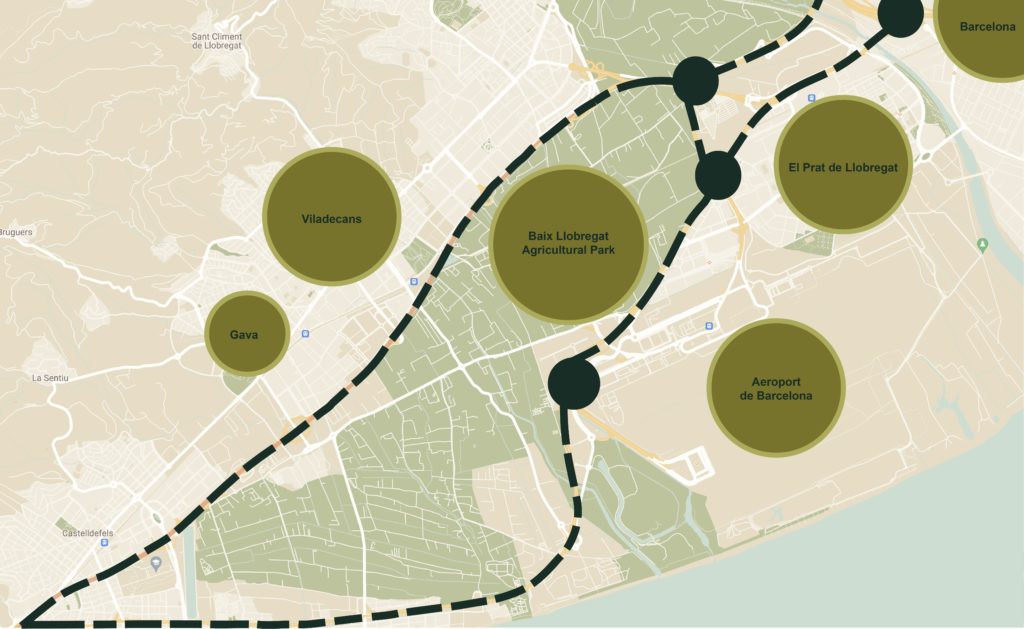
Food Production
Food Loss refers to the initial stages of planting, harvesting, processing and distribution contributing to 78% of food thrown out. Food Waste refers to food thrown out by supermarkets and consumers accounting for 22% of waste.

As conclusion;
- Food has become global and so we do not eat locally anymore.
- Huge food miles due to transportation.
- Large carbon footprints.
- People no longer have knowledge about where their food has come from or how it is grown.
- Aesthetics: if the food doesn’t look perfect many people will not eat it.
- Best before dates make people throw out food that is still good.
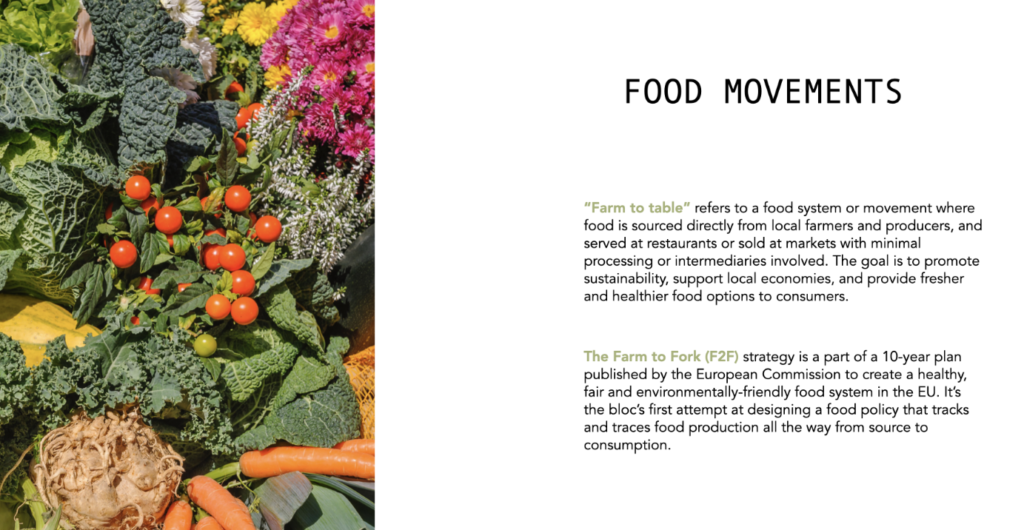
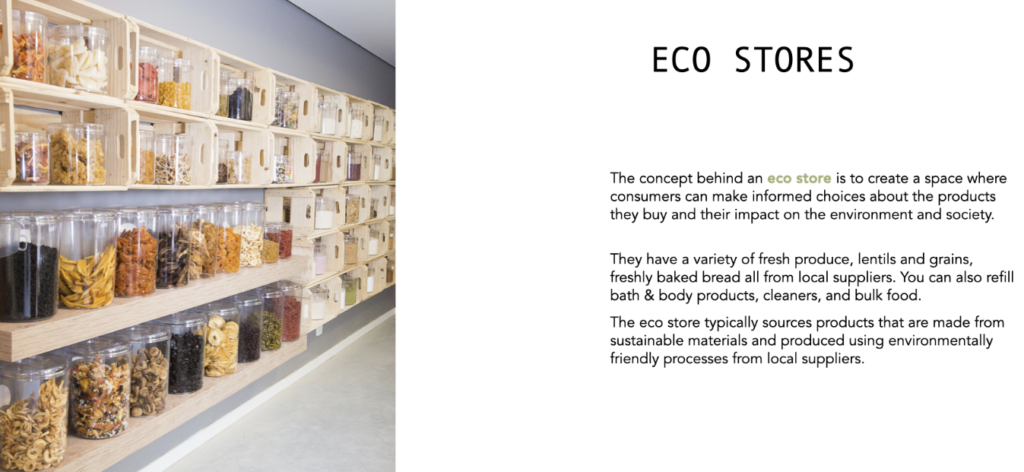
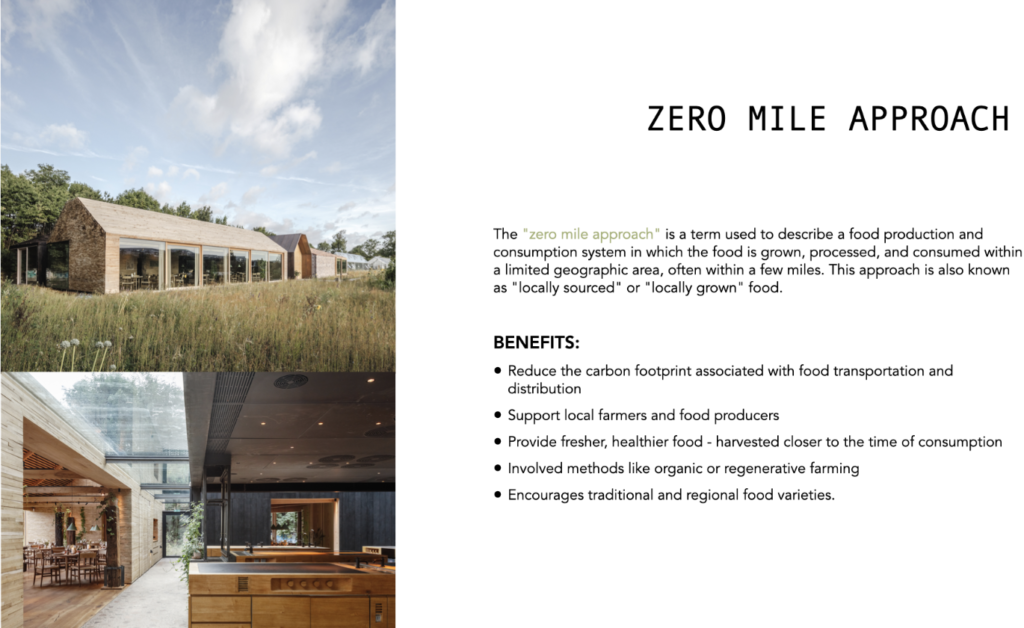
Typologies of markets:
The four main typologies of market design:
- Open-Air Markets
These are outdoor markets that typically sell fresh produce, flowers, and other goods.
Mercat de la Boqueria: Located in the heart of Barcelona, this famous open-air market is known for its colorful displays of fresh fruits, vegetables, seafood, and meats.
- Covered Markets
These are indoor markets that provide a covered shopping experience.Mercat de Santa Caterina: This market is known for its colorful, wavy roof and its wide variety of fresh produce, meats, and seafood. - Farmers Markets
These are markets where local farmers sell their products directly to consumers.
Mercat de la Terra: This is an organic farmers market that takes place every Saturday from 10 am to 4 pm in the Poble Sec neighborhood of Barcelona. It features fresh, locally grown produce, as well as artisanal breads, cheeses, and other specialty foods. - Flea Market
- These are markets where vendors sell second-hand or vintage items.
- Encants Vells: This flea market is one of the oldest markets in Barcelona and offers a wide range of vintage clothing, furniture, and other items. It takes place on Mondays, Wednesdays, Fridays, and Saturdays in the Els Encants neighborhood.
Program Brief:
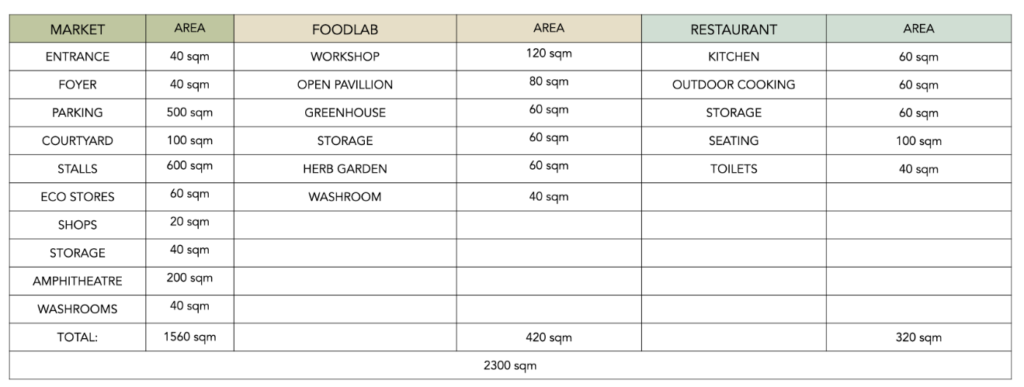
Global types and sizes of concrete blocks:



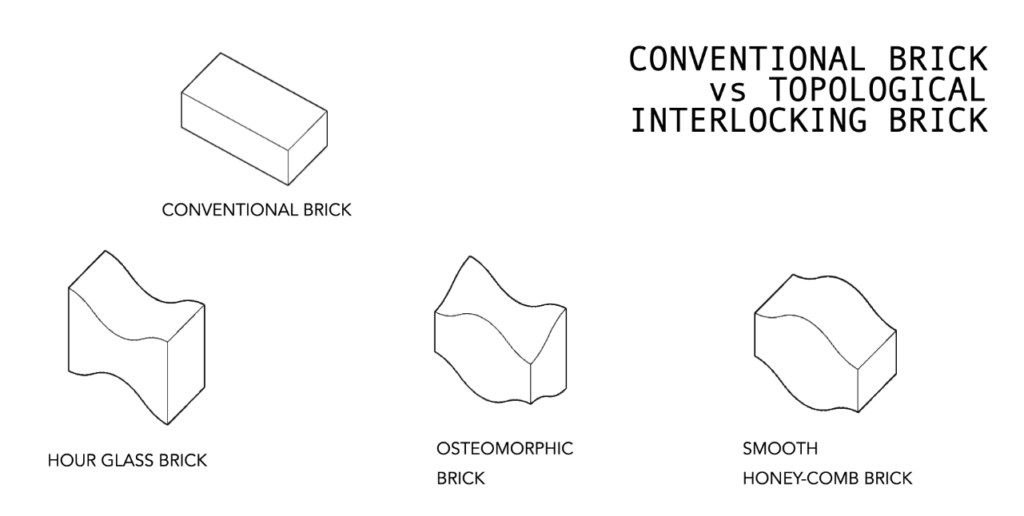
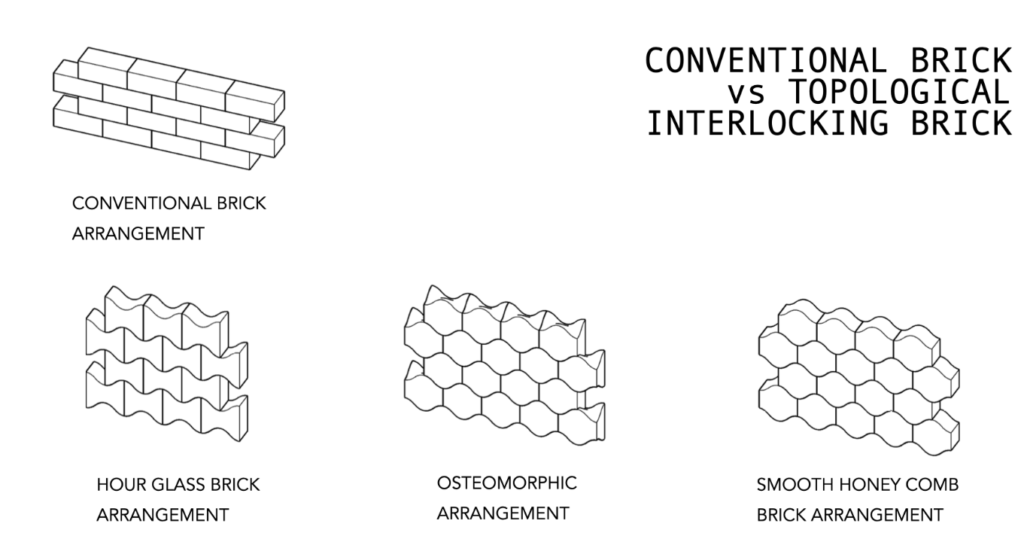
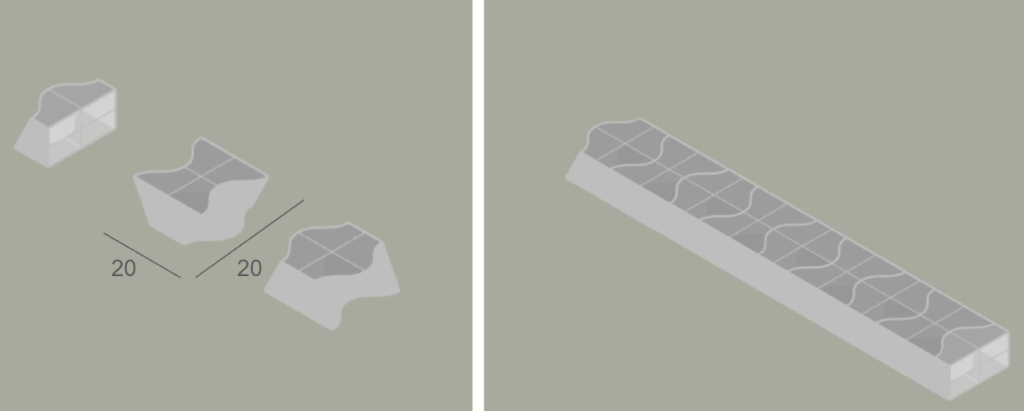
Brick Geometry
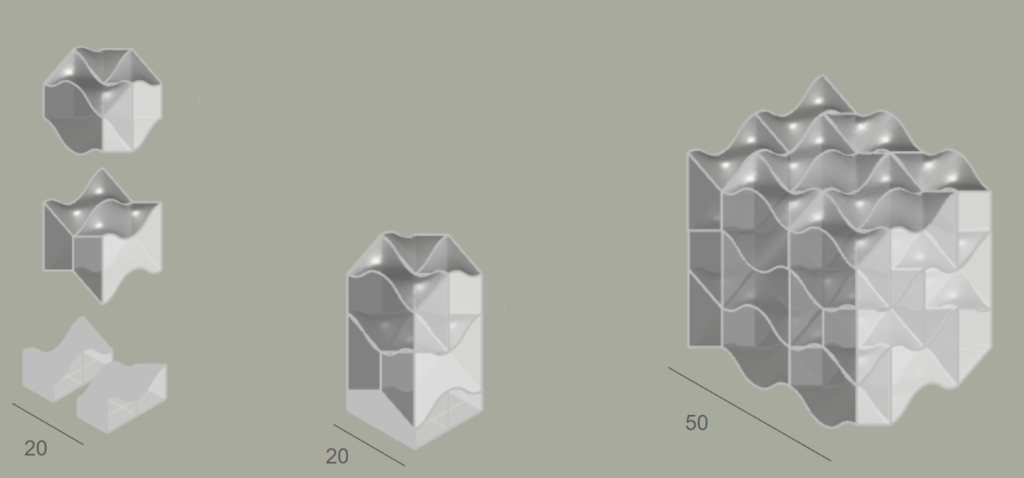
Brick Dimensions as Column

Geometrical Iterations


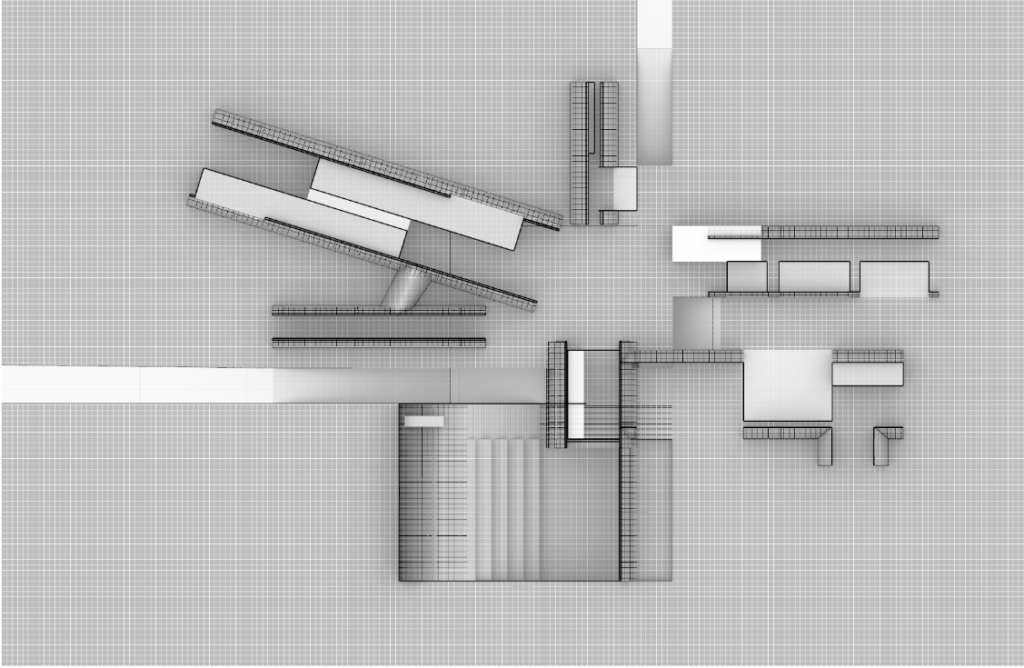
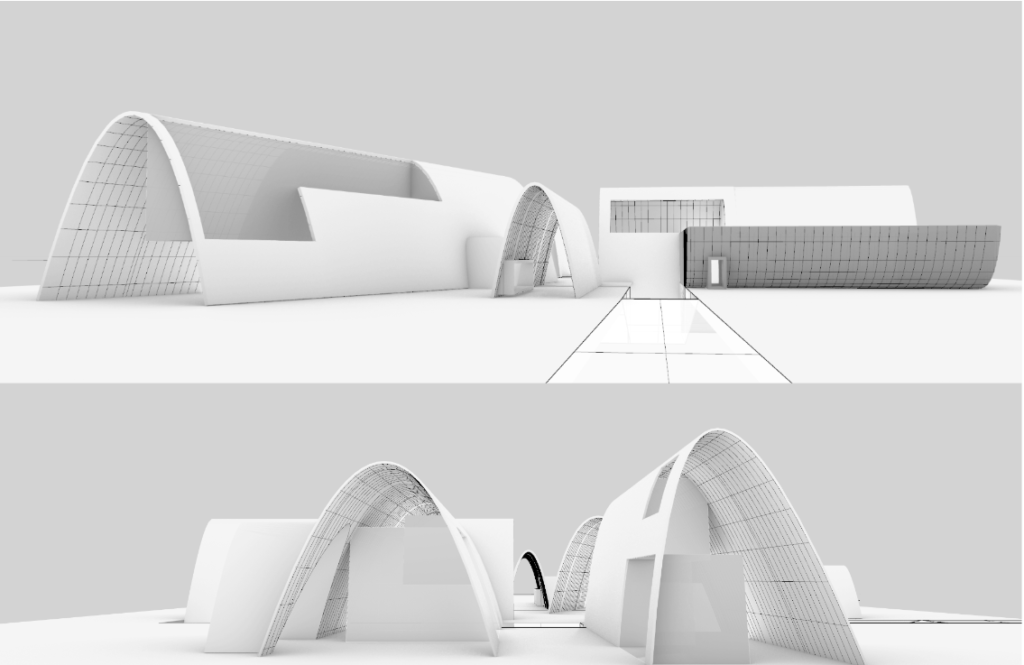
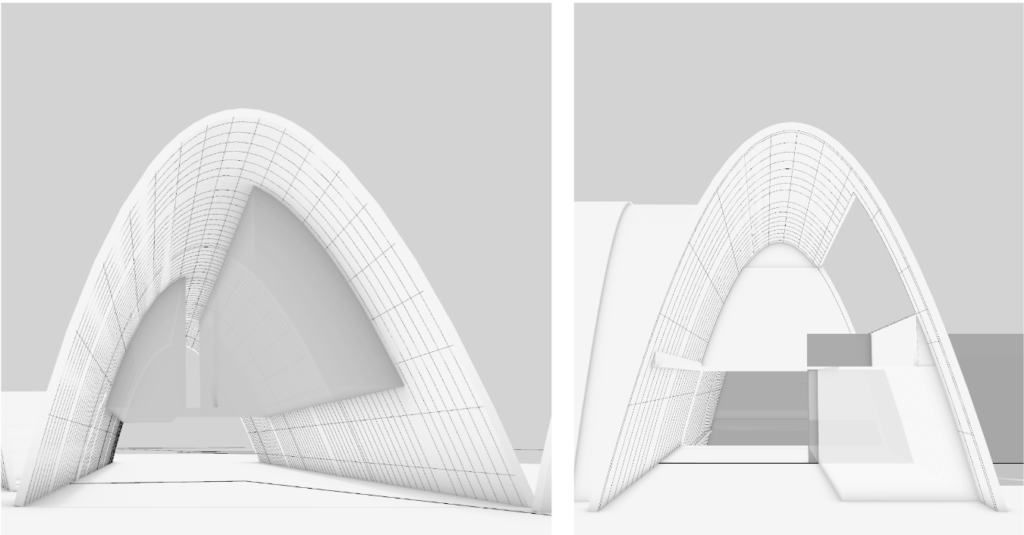
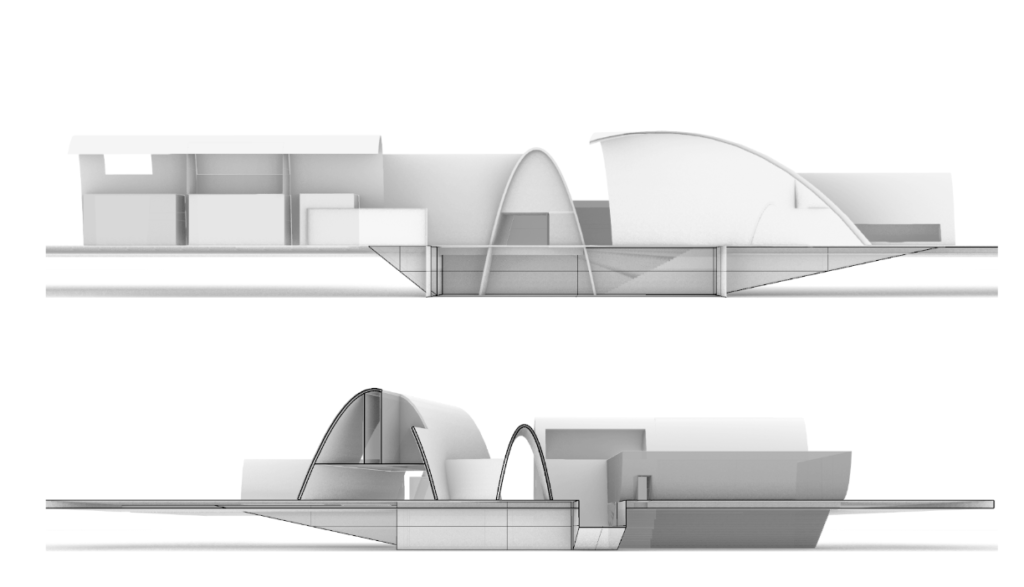
As advocates for sustainable design, we believe that our proposed market design for the outskirts of Barcelona can serve as a model for sustainable commerce that reduces our impact on the environment while also supporting local agriculture.
Our market design is centered around use of biochar bricks, which are derived from agricultural waste and have been shown to have zero-carbon emissions. By using these bricks, we are not only reducing our dependence on non-renewable materials, but we are also helping to reduce greenhouse gas emissions.
In addition to the building, this market will feature extensive green spaces and gardens, where local farmers can sell their product directly to consumers. These green spaces will serve as a source of fresh product for community and will also help to regulate the temperature and air quality in the area.
Our ultimate aim is to create a zero-carbon emission market that supports the local community and reduces our impact on the environment. By using biochar bricks in our design, we are not only reducing our carbon footprint, but we are also supporting local agriculture and creating a more sustainable future.

